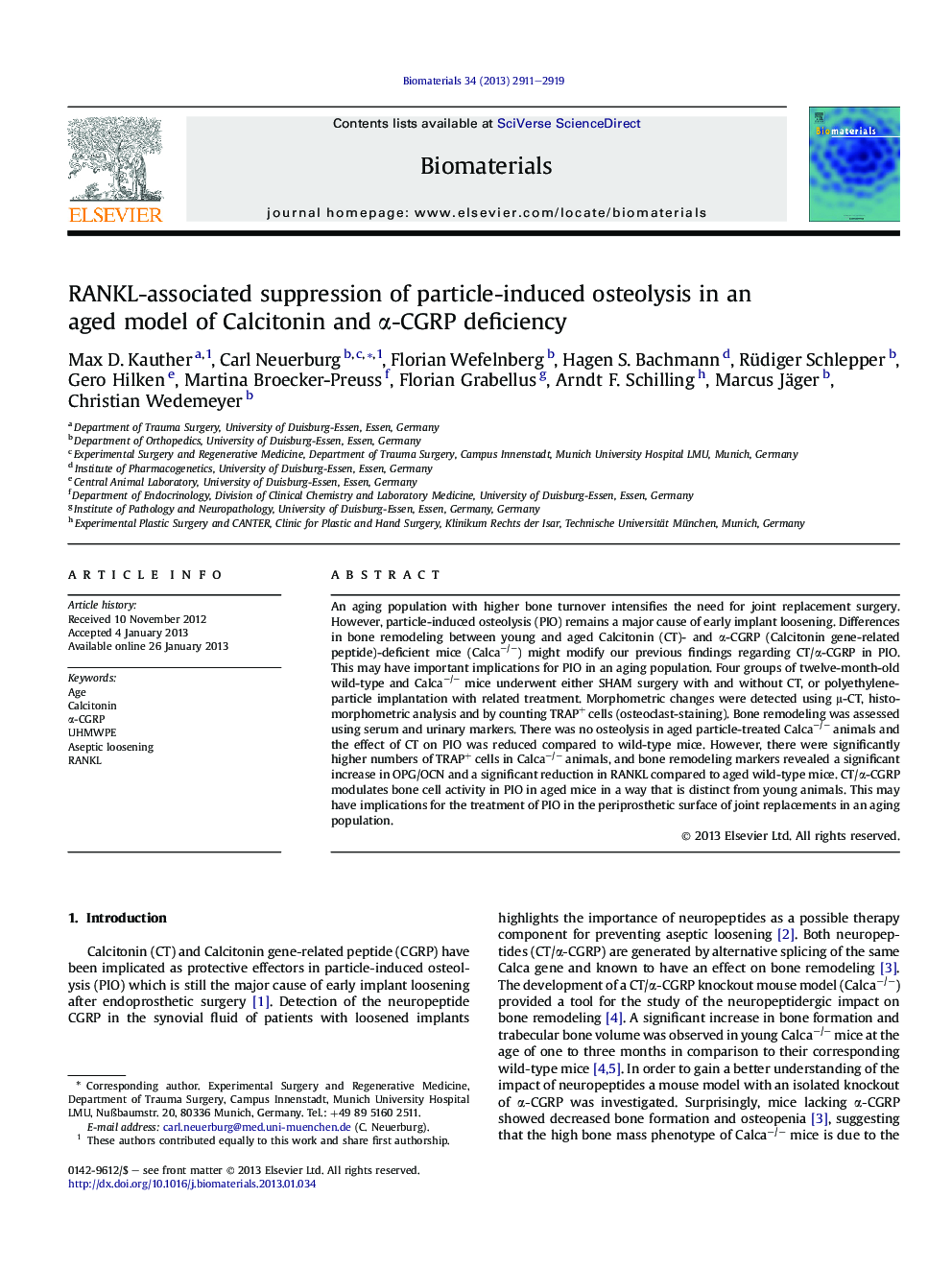| Article ID | Journal | Published Year | Pages | File Type |
|---|---|---|---|---|
| 6256 | Biomaterials | 2013 | 9 Pages |
An aging population with higher bone turnover intensifies the need for joint replacement surgery. However, particle-induced osteolysis (PIO) remains a major cause of early implant loosening. Differences in bone remodeling between young and aged Calcitonin (CT)- and α-CGRP (Calcitonin gene-related peptide)-deficient mice (Calca−/−) might modify our previous findings regarding CT/α-CGRP in PIO. This may have important implications for PIO in an aging population. Four groups of twelve-month-old wild-type and Calca−/− mice underwent either SHAM surgery with and without CT, or polyethylene-particle implantation with related treatment. Morphometric changes were detected using μ-CT, histomorphometric analysis and by counting TRAP+ cells (osteoclast-staining). Bone remodeling was assessed using serum and urinary markers. There was no osteolysis in aged particle-treated Calca−/− animals and the effect of CT on PIO was reduced compared to wild-type mice. However, there were significantly higher numbers of TRAP+ cells in Calca−/− animals, and bone remodeling markers revealed a significant increase in OPG/OCN and a significant reduction in RANKL compared to aged wild-type mice. CT/α-CGRP modulates bone cell activity in PIO in aged mice in a way that is distinct from young animals. This may have implications for the treatment of PIO in the periprosthetic surface of joint replacements in an aging population.
